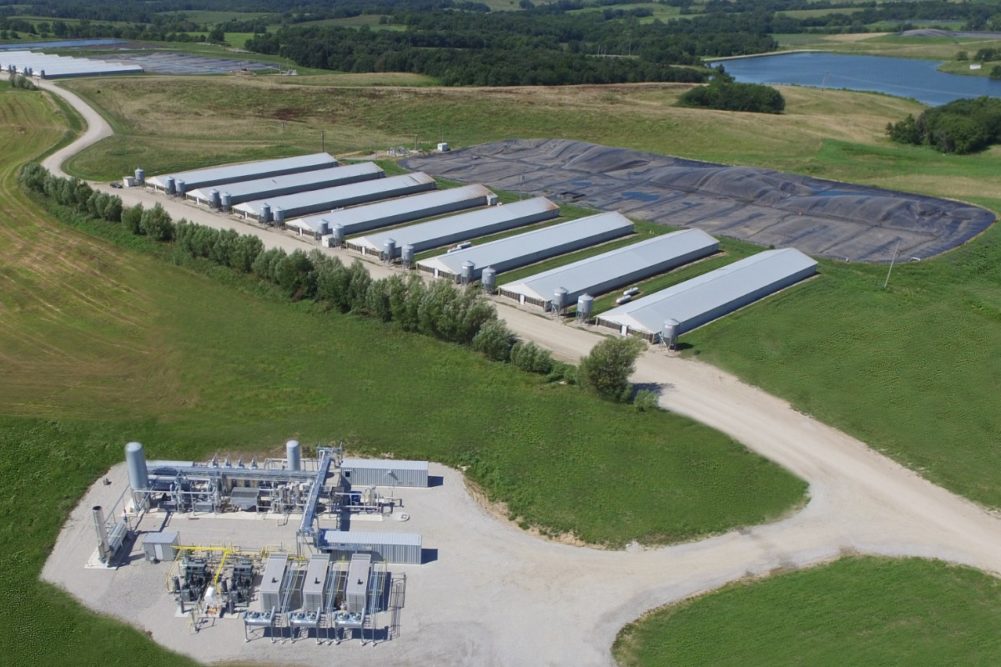SMITHFIELD, Va. — Smithfield Foods Inc. announced on Sept. 3, plans to being carbon negative in all company-owned operations in the United States by 2030.
Carbon negative — opposed to carbon neutral— means the company removes more carbon from the atmosphere than it emits and will reach the goal without purchasing carbon credit to offset emissions.
“As the world grapples with environmental challenges impacting our planet, consumers are looking to companies to take deliberate, bold action to address issues such as climate change,” said Kenneth M. Sullivan, president and chief executive officer of Smithfield. “The world is at an inflection point. To feed a growing world population, with finite resources available to grow and produce the food we need, we must limit our environmental impact. At Smithfield, we are utilizing our expansive reach to lead efforts to eliminate our carbon footprint in our company-owned operations and remove greenhouse gases from the atmosphere.”
The pork producer said this commitment is part of its plan to reduce greenhouse gas (GHG) emissions 25 percent by 2025 throughout its supply chain. The company is also working on Smithfield Renewables, a platform to combine its renewable energy and carbon reduction goals.
“Smithfield pioneered bold carbon emission targets in our industry, and we are continuing to innovate long-term solutions across our industry-leading sustainability program,” added Stewart Leeth, vice president and chief sustainability officer of Smithfield. “To achieve this ambitious new carbon negative objective, work is already underway and will include a variety of strategies, including renewable natural gas ventures, regenerative agricultural practices, improvements in our animals’ diets, renewable electricity purchases and transportation, logistics and packaging projects.”
Smithfield will focus on its company-run farms as a place to reduce its carbon output. Smithfield is focusing its energy on ensuring crops are grown with efficient fertilizer and soil health practices and implementing renewable energy projects that reduce emissions through renewable natural gas (RNG) and wind and solar power generation.
A major program for the company is capturing methane from hog manure on farms and making it into RNG. Smithfield has started projects across several company-owned finishing spaces in North Carolina, Virginia and Missouri along with other states.
“Renewable energy is a cornerstone of our strategy to become carbon negative, and we have spent decades investing in and perfecting our approach,” said Kraig Westerbeek, senior director of Smithfield Renewables and hog production environmental affairs, Smithfield Foods. “Capturing methane and transforming it into RNG removes at least 25 times more GHGs from the atmosphere than are released from its end use in power plants, homes, vehicles and businesses, creating a cleaner environment and even more sustainable farms.”
At its more than 40 processing facilities in the US, Smithfield plans to reduce consumption by implementing ongoing operational efficiency projects like lower energy use in refrigeration, lighting and other equipment projects.
The company said it is also developing a wind power project calculated to account for more than 15 percent of its total energy usage. Smithfield added that the processing facility would use renewable natural gas from the wastewater treatment system at its Tar Heel, NC, pork processing plant to power homes and businesses in that area.
In 2019, Smithfield set a new goal to reduce 75% of overall solid waste sent to landfills by 2025 and certify three-quarters of its domestic facilities as zero-waste-to-landfill by 2025.
For transportation and logistics, Smithfield is working on its logistics optimization initiative to reduce the number of regional distribution centers and enhancing transportation routes to be shorter and more efficient.
“Current efforts reduce distance traveled each year by approximately 11.2 million miles and reduce diesel consumption by 1.6 million gallons, equating to an annual GHG emission reduction of nearly 13,000 metric tons of carbon dioxide equivalent (CO2e), or taking more than 2,800 passenger cars off the road annually,” Smithfield said in its announcement.
Finally, Smithfield mentioned its conservation activities, including its partnership with the Monarch Butterfly Habitat Exchange, a program that aims to restore 1.5 million acres of high-quality breeding and nectaring habitat along the butterflies’ migration route. This includes reintroducing native species desired by monarchs on lands surrounding Smithfield hog farms in Missouri. The company said it would continue to identify new opportunities focused on conservation.


